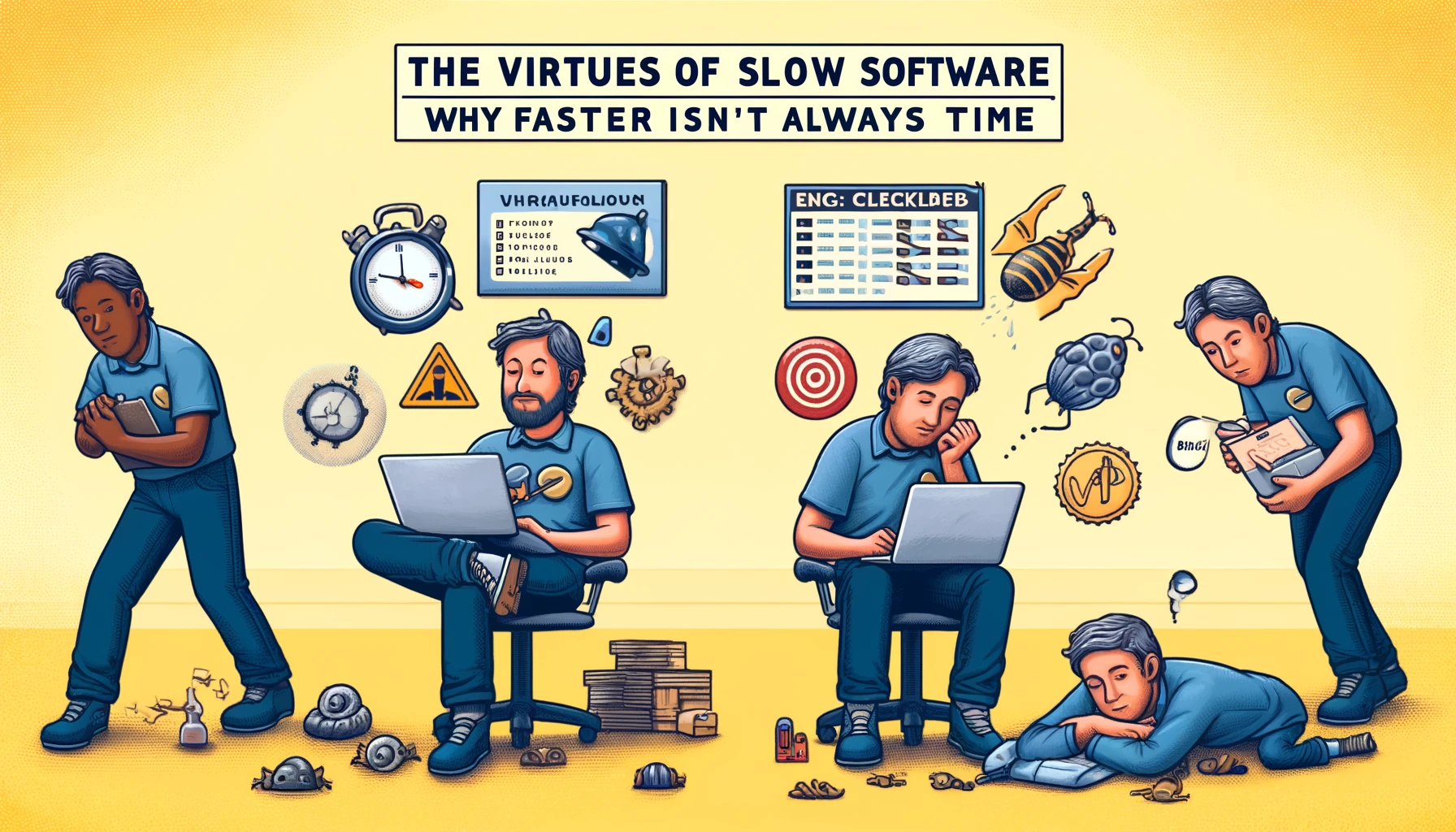This research paper explores the benefits of slow software development practices, challenging the pervasive notion that faster is always better. By examining case studies, industry practices, and psychological theories, this paper highlights how slower development cycles can lead to higher quality products, better user experiences, and more sustainable business practices. It delves into the virtues of deliberate pacing, thorough testing, and mindful development in achieving long-term success.
Introduction
In an era where rapid development and quick releases are often celebrated, the virtues of slow software development are frequently overlooked. This paper aims to shed light on the benefits of taking a slower, more deliberate approach to software development. By prioritizing quality, user experience, and sustainability, slow software practices can provide significant advantages over the rush to market.
Historical Context
The fast-paced nature of modern software development has its roots in the competitive tech industry, where time-to-market is often seen as a critical factor for success. However, this focus on speed can lead to a range of issues, including technical debt, security vulnerabilities, and user dissatisfaction. Historically, many successful software products were developed over extended periods, with a focus on thorough testing and refinement.
Quality Over Speed
One of the primary virtues of slow software development is the emphasis on quality. Taking the time to thoroughly design, develop, and test software can significantly reduce the number of bugs and security issues. This focus on quality not only improves the user experience but also reduces long-term maintenance costs. Products that undergo slower, more deliberate development cycles are often more stable and reliable.
Enhanced User Experience
Slow software development allows for a more thoughtful approach to user experience design. By involving users in the development process and iterating based on their feedback, developers can create products that better meet user needs and expectations. This user-centered approach can lead to higher user satisfaction and loyalty, as the software evolves in a way that resonates with its audience.
Sustainability and Maintenance
Slower development cycles contribute to more sustainable software practices. By avoiding the rush to market, developers can build systems that are easier to maintain and extend over time. This sustainability reduces the likelihood of accumulating technical debt and ensures that the software can adapt to future needs and changes. A slower pace also allows for better documentation and knowledge transfer within development teams.
Psychological and Social Benefits
The rush to develop and release software quickly can lead to high levels of stress and burnout among developers. Slow software practices prioritize the well-being of the development team by allowing for more reasonable workloads and deadlines. This focus on mental health and work-life balance can lead to a more motivated and productive team, ultimately resulting in better software.
Case Studies
To illustrate these points, we examine several case studies:
- Mozilla Firefox: The development of Mozilla Firefox involved a deliberate and user-centered approach. By taking the time to gather user feedback and iterate on the design, Firefox became a popular and highly regarded web browser known for its performance and usability.
- JetBrains IntelliJ IDEA: JetBrains takes a slower approach to releasing updates for IntelliJ IDEA, focusing on quality and stability. This has resulted in a robust and reliable development environment that is highly valued by its users.
Strategic Slow Development
Implementing slow software practices requires a strategic approach. Key strategies include:
- Iterative Development: Adopting an iterative development process that allows for regular testing and refinement.
- User Involvement: Involving users throughout the development cycle to gather feedback and ensure the software meets their needs.
- Thorough Testing: Prioritizing comprehensive testing to identify and fix issues before release.
- Reasonable Deadlines: Setting realistic deadlines that allow for thoughtful development and avoid unnecessary pressure on the development team.
Conclusion
The virtues of slow software development highlight the benefits of prioritizing quality, user experience, and sustainability over speed. By embracing a slower, more deliberate approach, developers can create software that is more reliable, user-friendly, and easier to maintain. The evidence presented in this paper underscores the importance of rethinking development practices to achieve long-term success in the fast-paced tech industry.

